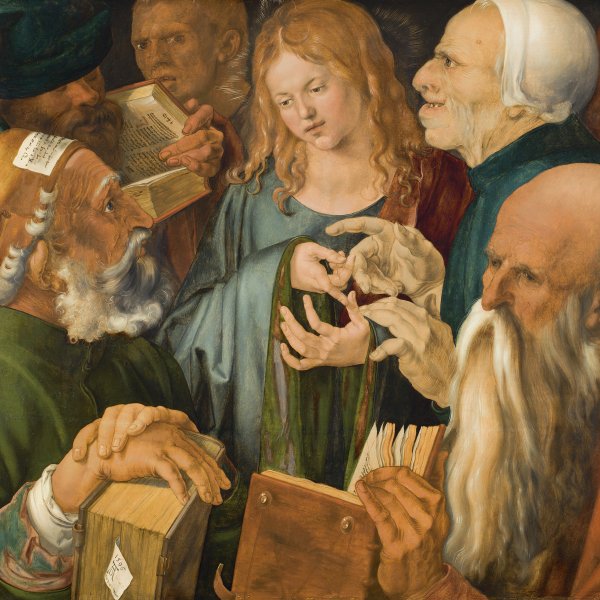Albrecht Dürer
Dürer was the son of a goldsmith from whom he learned the painstaking detail and precision of that craft. He trained as a painter and printmaker in the workshop of Michael Wolgemut. During his years as an apprentice Dürer copied and studied prints by Martin Schongauer, which had a profound impact on him. In 1490, at the end of his training, he travelled through the Upper Rhine area and visited Colmar, Strasburg and Basel. During this period he executed the illustrations for the Ship of Fools by Sebastian Brant. In 1494 the artist was again in Nuremberg, where he married Agnes Frey, daughter of a local goldsmith. In 1494 he made a short trip to Venice then opened his own workshop the following year. During this period Dürer became associated with scholarly, humanist circles in Nuremberg and established an enduring friendship with Willibald Pirckheimer. This was the most productive period of his career when he produced major works such as the woodcut series of The Apocalypse (1498), and the paintings of The Adoration of the Magi of 1504 (Galleria degli Uffizi, Florence), and the Paumgärtner Altarpiece of the same year (Alte Pinakothek, Munich). Between 1505 and 1506 he made a second trip to Venice, this time proceeded by his fame as a celebrated artist, and met leading figures in the city’s art world such as Giovanni Bellini. In Venice Dürer painted The Madonna of the Rose Garlands (Národní Galerie, Prague) and a significant group of watercolours. He also focused on theoretical issues of proportion. Dürer’s experiences in Venice are recounted in his interesting letters to Pirckheimer. In 1512 Maximilian I summoned the artist to produce various works including the design for a Triumphal Arch and Dürer continued to work for the Emperor until 1519. Dating from 1513 are his prints of The Knight, Death and the Devil and Saint Jerome in his Study, while the great print of Melencolia I dates from the following year. In 1520 the artist travelled to the Low Countries with the aim of persuading the new Emperor Charles V to renew his pension. His impressions of this trip are recorded in Dürer’s comments and drawings in the first known artist’s diary of this type. Among the cities visited by Dürer, where he was received with honours, were Antwerp, Brussels, Bruges and Ghent. On his return to Nuremberg he continued to execute prints and paintings, including the painting of The Four Apostles (Alte Pinakothek, Munich), and also wrote The Four Books on Proportion (published in 1528). Dürer is considered the greatest northern Renaissance artist and his work made a profound impact on his contemporaries and on future generations. Some of the most important 16th-century German painters of the day trained in his studio including Hans Suess von Kulmbach, Hans Baldung Grien, Wolf Traut, Hans Leonhard Schäufelein and Hans Springinklee.





